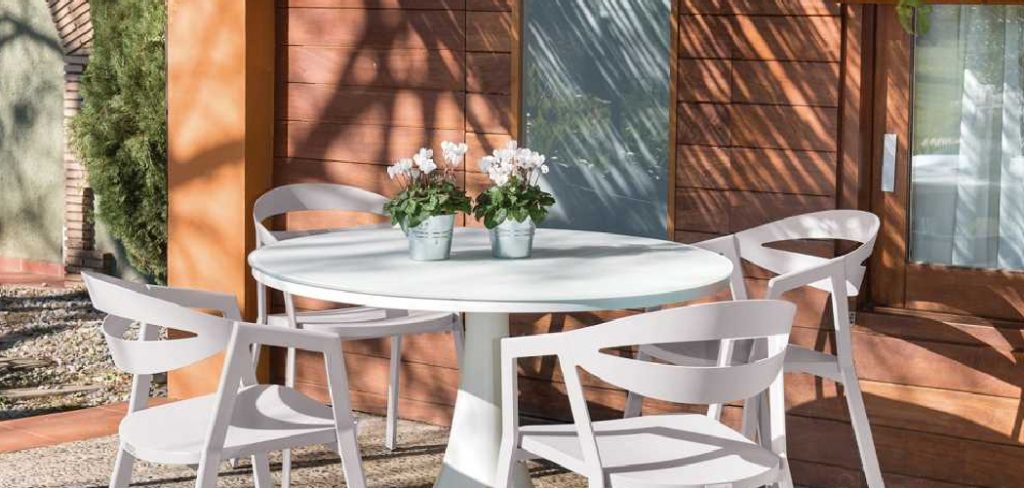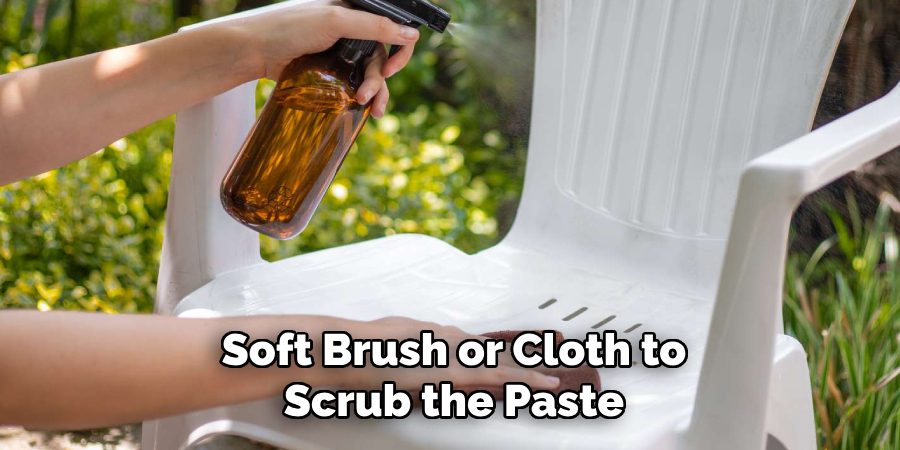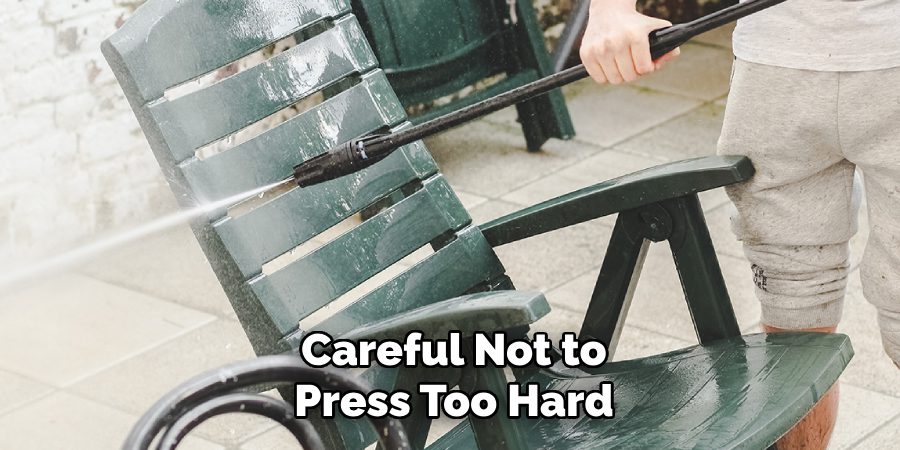Keeping your plastic patio furniture clean not only enhances its appearance but also extends its longevity. Over time, outdoor furniture is exposed to dirt, grime, and weather elements that can lead to stains and discoloration. This guide explores the key aspects of how to clean plastic patio furniture. With the right approach and simple cleaning techniques, you can maintain your furniture’s aesthetic and functionality, ensuring it remains a welcoming addition to your outdoor space.

Importance of Keeping Plastic Patio Furniture Clean
Regular cleaning of plastic patio furniture is essential for several reasons. Firstly, it helps preserve the furniture’s visual appeal, preventing the buildup of dirt, mildew, and stains that could make it look worn or neglected. Secondly, maintaining cleanliness can extend the lifespan of the furniture by reducing the risk of damage caused by accumulated grime or exposure to harsh weather conditions. Additionally, clean furniture creates a healthier and more inviting outdoor environment, free from allergens, bacteria, or mold. Investing time in cleaning not only protects your furniture but also enhances the comfort and enjoyment of your outdoor living space.
Understanding Different Types of Plastic Patio Furniture
Plastic patio furniture comes in a variety of materials, each with unique qualities and maintenance needs. The most common types include resin, polyethylene, and polycarbonate. Resin furniture is lightweight, sturdy, and resistant to weathering, making it a popular choice for outdoor use. Polyethylene furniture, particularly high-density polyethylene (HDPE), is valued for its durability and recyclability, offering both strength and an eco-friendly option.

Polycarbonate furniture, on the other hand, is highly durable and scratch-resistant, but it may require more careful handling to avoid cracking under extreme pressure. Understanding the type of plastic your patio furniture is made of can help you determine the most suitable cleaning methods, ensuring proper care and longevity. Different materials may react differently to cleaning agents, so knowing the specific type ensures you avoid damage while achieving optimal cleanliness.
10 Methods How to Clean Plastic Patio Furniture
1. Begin with a Basic Cleaning
Before tackling tougher stains or mildew, it’s a good idea to start with a basic cleaning routine to remove surface dirt and debris. Begin by using a soft brush or a cloth to wipe down the furniture, brushing off any leaves, dust, or other loose particles. A garden hose can also be used to rinse the furniture, which helps to dislodge stubborn dirt. For a deeper clean, mix a solution of warm water and a mild dish soap, and use a sponge or cloth to scrub down the plastic furniture. Rinse thoroughly with clean water to remove any soap residue, ensuring the furniture is left spotless and ready for the next step.
2. Remove Stubborn Stains with Baking Soda Paste
Plastic patio furniture can sometimes develop stubborn stains that regular cleaning won’t remove. For these stains, a simple yet effective method is to create a paste using baking soda and water. Mix three parts baking soda to one part water until it forms a thick paste. Apply the paste directly to the stained areas and allow it to sit for a few minutes. Then, use a soft brush or cloth to scrub the paste into the stains in circular motions. Baking soda acts as a mild abrasive, which gently lifts dirt and grime without scratching the surface. After scrubbing, rinse the furniture thoroughly with water to remove the paste and any residue.

3. Use White Vinegar for Mildew and Mold
Plastic furniture that has been exposed to moisture over time can develop mildew or mold, which can create unsightly black or green spots. White vinegar is an excellent natural solution for treating mildew and mold. Mix a solution of equal parts white vinegar and water, and pour it into a spray bottle. Spray the vinegar solution directly onto the affected areas and allow it to sit for 10–15 minutes to break down the mildew or mold. After the solution has had time to work, use a soft-bristled brush or sponge to scrub the affected areas. Rinse the furniture thoroughly with water to ensure all the vinegar solution and mildew have been removed.
4. Clean with a Commercial Plastic Cleaner
If you’re looking for a more specialized approach, a commercial plastic cleaner can be a great option for cleaning plastic patio furniture. These cleaners are specifically designed to remove dirt, stains, and grime from plastic surfaces without causing damage. Choose a cleaner that is safe for outdoor furniture and follow the manufacturer’s instructions for use. Typically, these products are sprayed onto the furniture and wiped off with a cloth or sponge. Commercial plastic cleaners often contain conditioners that help to protect the plastic and prevent it from becoming brittle or faded from sun exposure.
5. Use a Magic Eraser for Tough Marks
For particularly stubborn scuff marks or marks caused by heavy use, a magic eraser can work wonders. Magic erasers are made from melamine foam, which is an effective cleaning tool for removing marks without the need for harsh chemicals. Simply wet the magic eraser and gently rub it over the scuff marks or stains. Be careful not to press too hard, as this could scratch the surface. After cleaning with the magic eraser, wipe down the furniture with a damp cloth to remove any residue, leaving the furniture looking clean and fresh.

6. Eliminate Grease and Oil with Dish Soap and Baking Soda
Plastic patio furniture can sometimes accumulate grease or oil stains, especially if it’s used near a grill or cooking area. To tackle these tough stains, a combination of dish soap and baking soda can be particularly effective. First, apply a generous amount of dish soap directly to the stained area and allow it to sit for a few minutes. Then, sprinkle a small amount of baking soda over the soap. Use a sponge or soft brush to scrub the mixture into the stain, which will help to break down the grease or oil. Rinse the furniture with clean water to remove the soap and baking soda residue.
7. Use a Power Washer for Deep Cleaning
For large pieces of plastic patio furniture or extensive dirt buildup, a power washer can be an effective tool for deep cleaning. A pressure washer can quickly and efficiently remove dirt, grime, and debris from the surface of the furniture. However, it’s important to use the correct pressure setting to avoid damaging the plastic. Start with a low pressure setting and gradually increase it if necessary. Hold the nozzle about 12–18 inches away from the surface to prevent any damage. Be sure to rinse all areas thoroughly, and allow the furniture to dry completely before use.
8. Treat Plastic Furniture with UV Protectant
While cleaning is important, maintaining the appearance of plastic patio furniture also involves protecting it from the sun’s harmful UV rays. Over time, prolonged sun exposure can cause plastic furniture to fade and become brittle. After cleaning, consider applying a UV protectant spray specifically designed for plastic surfaces. These products help to prevent discoloration and degradation caused by UV rays while also providing a protective layer that repels dirt and stains. Be sure to apply the protectant evenly and according to the manufacturer’s instructions for optimal results.
9. Address Discoloration with Hydrogen Peroxide
If your plastic patio furniture has developed yellowing or discoloration, hydrogen peroxide can be an effective solution. The chemical properties of hydrogen peroxide help to break down stains and restore the plastic’s original color. Mix a solution of 50% hydrogen peroxide and 50% water and apply it directly to the discolored areas. Let the solution sit for about 15–30 minutes, depending on the severity of the discoloration. Afterward, scrub the area with a soft brush or sponge, and rinse with clean water. This method works particularly well for white or light-colored plastic furniture that has yellowed over time.

10. Store Furniture Properly to Prevent Future Build-Up
The best way to maintain the cleanliness of your plastic patio furniture is to store it properly when not in use, especially during harsh weather conditions. When the furniture is not being used, cover it with a weather-resistant cover or store it in a dry, shaded area to protect it from dirt, sun exposure, and rain. This will reduce the amount of cleaning required and help preserve the appearance of your furniture. If storing the furniture indoors isn’t an option, consider purchasing outdoor storage solutions, such as sheds or storage bins, to protect it from the elements.
Conclusion
Proper care and maintenance of your plastic patio furniture not only keep it looking its best but also extend its lifespan. By using the techniques outlined above, such as cleaning with natural solutions, addressing tough stains, and applying UV protectants, you can ensure that your furniture remains in excellent condition year-round. Remember to store your furniture properly during off-seasons to prevent unnecessary wear and tear. So, there you have it – a quick and easy guide on how to clean plastic patio furniture.

Professional Focus
Oliver Wood, a passionate patio designer, specializes in creating comfortable and inviting outdoor spaces that enhance relaxation and entertainment. His work combines a deep understanding of design with a love for nature, making him a standout professional in the field of outdoor living spaces. Through his thoughtful approach, he transforms everyday patios into extraordinary retreats for family and friends.
About the Author
Oliver Wood, a skilled patio designer, shares his expertise on outdoor living through his designs and insights. With a background in patio design and a genuine passion for creating beautiful spaces, he encourages others to invest in their outdoor environments, enhancing their homes with functional and inviting spaces for relaxation and entertainment.
Education History
University: Virginia Union University
Oliver’s education equipped him with the knowledge and skills to design patios that merge aesthetics with comfort, transforming outdoor areas into beautiful extensions of the home.
Expertise:
- Patio Design and Outdoor Living Spaces
- Functional and Aesthetic Landscaping
- Comfortable and Inviting Outdoor Environments
- Design Philosophy for Family-Oriented Spaces
- Creating Spaces for Relaxation and Entertainment
